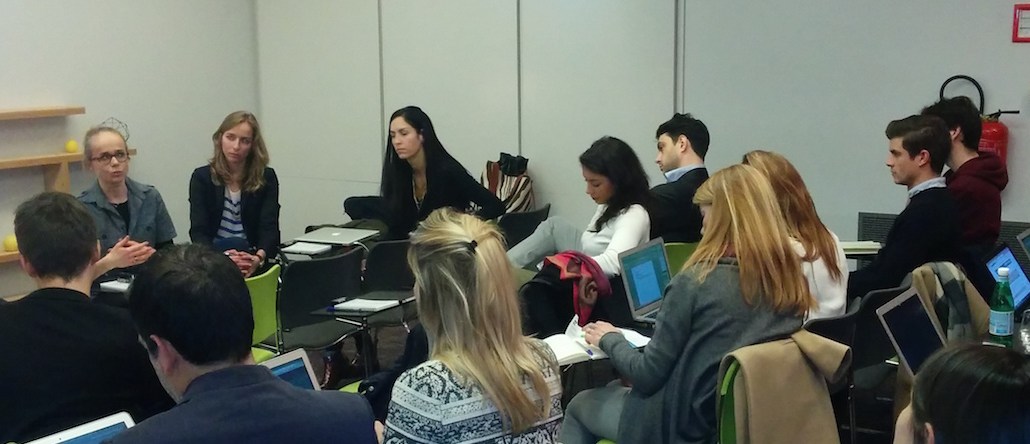The New York Times looks to programmatic ad sales in international markets

The New York Times has identified international expansion as one of four key pillars in its ambitious plan to double its digital revenue by 2020.
While digital subscriptions remain a focus, the Times is also on a mission to grow its international programmatic sales operations and has hired programmatic chiefs in the markets where it anticipates the most growth: London and Singapore.
The publisher is pitching its international programmatic proposition, including video and data opportunities, to European advertisers this week at two private client events located at Google’s offices in both Paris and London.
The goal: to foster closer relationships with U.K. and pan-Europe agencies and marketers on bespoke programmatic deals, and build the kind of long-term relationships with clients that it has in its core U.S. market. “We think of programmatic as a different way to transact, not as a different form of buying,” said Sara Badler, director of programmatic advertising at The New York Times. “That means programmatic is the same value as direct, so that’s high CPMs, high-impact ad units. We offer the same for both. There is no remnant or bottom-of-funnel buy.”
The timing of the charm offensive is fortuitous. With the furor around brands pulling back from sites that traffic in fake news, and issues of brand safety and ad misplacement back under the spotlight in the U.K. this week, agencies are hungry for more options around quality news propositions.
“They have timed this perfectly,” said Jason Jutla, senior activation director at Group M agency Essence. “Both highly advanced programmatic advertisers as well as those that aren’t want quality news content and environments.”
That doesn’t mean it will be easy, though. The New York Times, though respected worldwide, still has a scale challenge. In the U.K., it has approximately 5 million unique users monthly, according to comScore. The publisher claims 15 million a month across Europe. “When you break it down by market, aside from the U.K. and Germany and possibly some of their smaller business hubs, the numbers will be small and with very specific audiences that align to only a few advertisers. So scale will be their biggest challenge,” said Jutla.
That said, the fact the publisher opens all its inventory to compete programmatically with its direct sales, is a major plus and will differentiate it from other European publishers that don’t, he added.
The Times may not be reliant on ad revenue, with 1.6 million paid subscribers, but its digital advertising revenue was $209 million (£168 million) last year, and programmatic advertising drives an important part of that revenue.
“The New York Times’ programmatic operations have always been highly ambitious,” said Michael Stoeckel, vp of global tech strategy at Prohaska Consulting and former vp of ad revenue operations at The New York Times until last February. “We integrated server-to-server bidding auctions before they were even called that. The only thing that’s changed since I was there is that the overall monetization and marketing of it outside the U.S. has become increasingly important.”
Badler has hired Anne Bouttier, who joins the U.K. office as director, programmatic advertising, and Scott Austin, director, programmatic advertising in Singapore. Six people work solely on programmatic sales in total. All direct sales teams sell programmatic as part of overall advertiser package.
Agencies are intrigued.
“We want to hear about different ways the [Times] can transact programmatically, whether it’s via private marketplace opportunities or guaranteed deals. We’d like to see audience guaranteed front and center of their proposals,” said Julta. “We’d be interested in knowing if they are monitoring the different ways that people interact with their site. For example, can they determine when the first impression on a particular day may be particularly valuable, and highlight that for us.”
More in Media

Digiday+ Research: Publishers’ growing focus on video doesn’t translate to social platforms
Major publishers have made recent investments in vertical video, but that shift is not carrying over to social media platforms.

Technology x humanity: A conversation with Dayforce’s Amy Capellanti-Wolf
Capellanti-Wolf shared insight on everything from navigating AI adoption and combating burnout to rethinking talent strategies.

How The Arena Group is rewriting its commercial playbook for the zero-click era
The company is testing AI-powered content recommendation models to keep readers moving through its network of sites and, in doing so, bump up revenue per session – its core performance metric.








